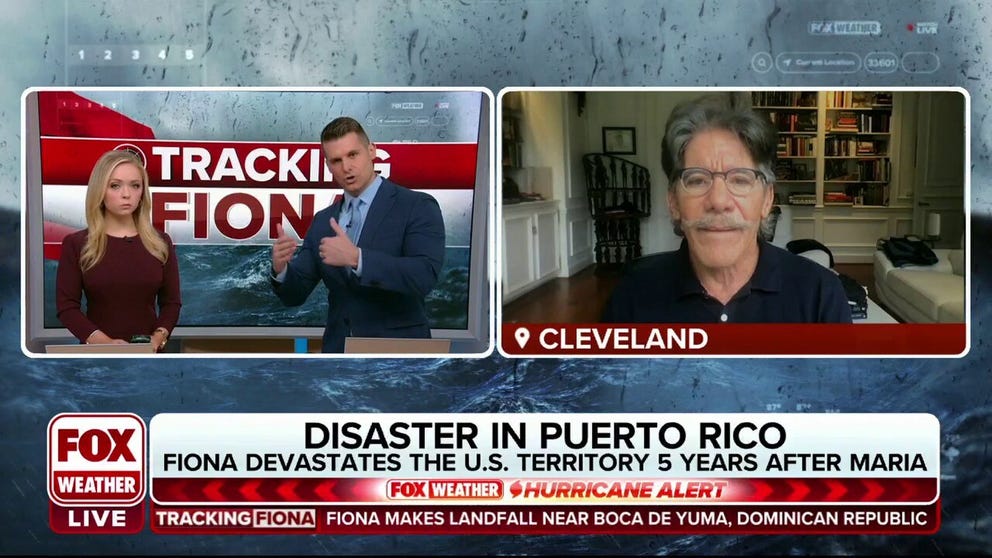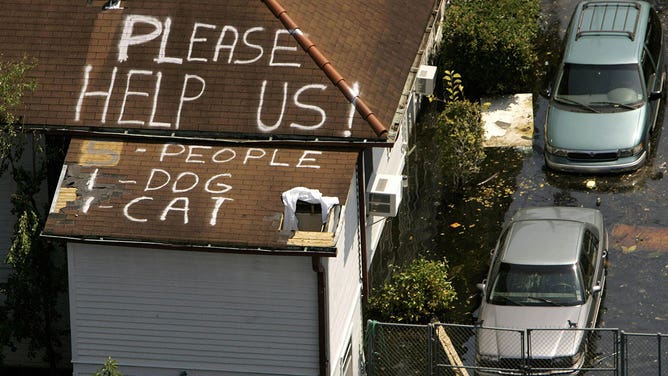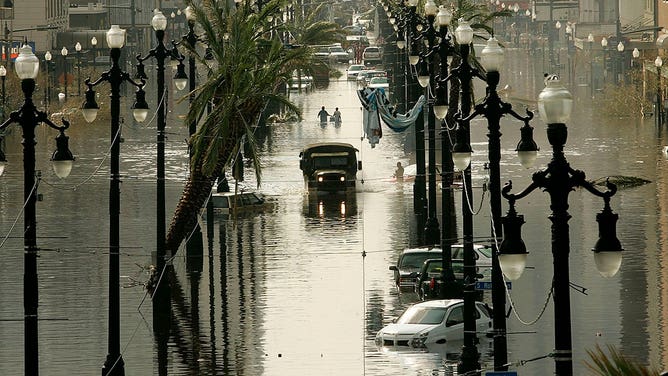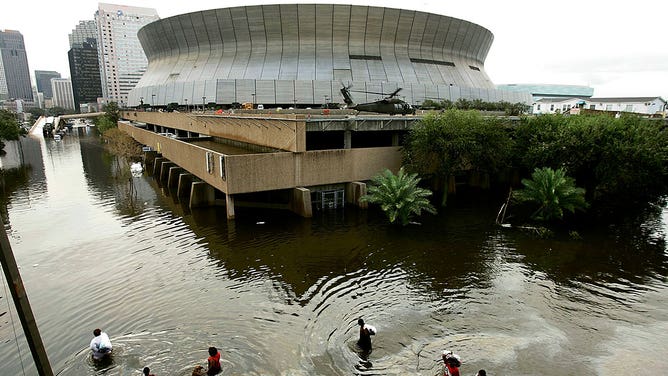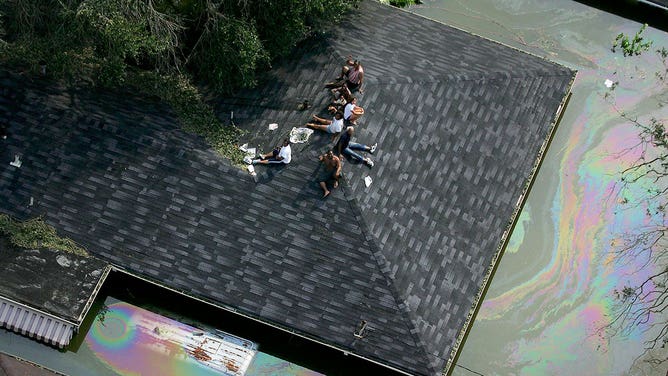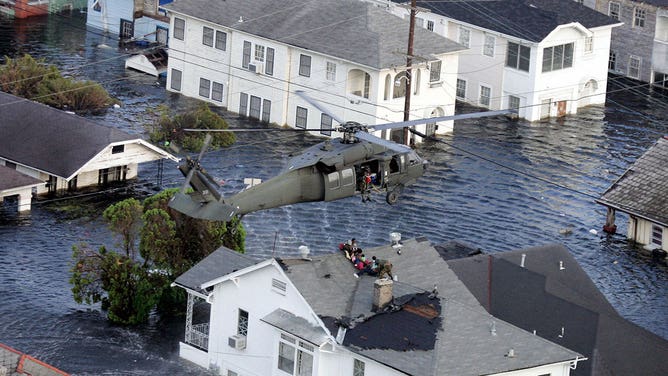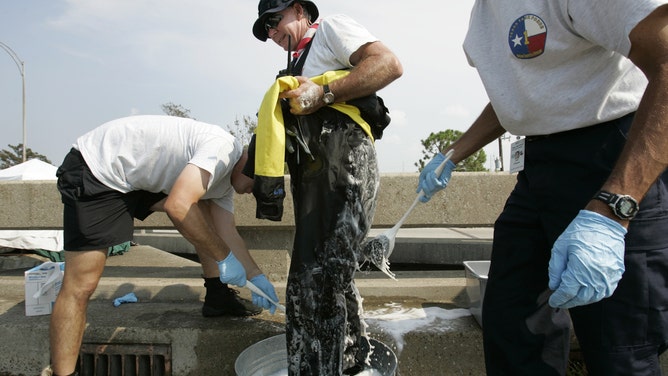Hurricane Katrina death toll drops, Hurricane Maria fatalities rise in updated federal reports
Two of the worst hurricanes in history – Hurricane Katrina in 2005 and Hurricane Maria in 2017 – claimed thousands of lives.
"The Five" Host Geraldo Rivera recounts covering Hurricane Maria
"The Five" Host Geraldo Rivera joins FOX Weather to discuss his reporting of Puerto Rico during Hurricane Maria in 2017 and compares it to Hurricane Fiona.
MIAMI – The official death tolls of two of the worst hurricanes in history – Katrina and Maria – have been adjusted in federal reports that were updated Wednesday.
According to the National Hurricane Center, the post-storm reports for Hurricane Katrina in 2005 and Hurricane Maria in 2017 were updated to reflect new research into the disastrous impacts of each storm.
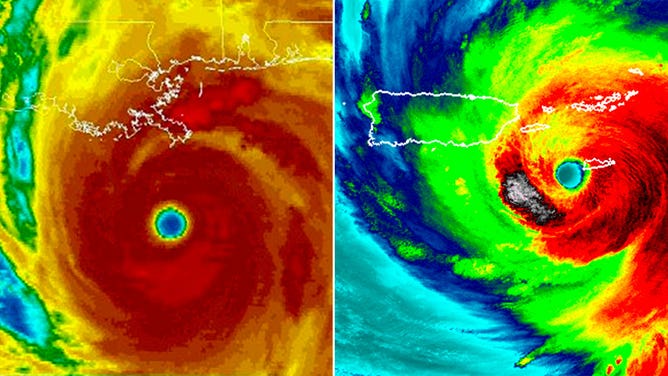
Hurricane Katrina (left) is seen as it moves toward Louisiana in August 2005. Hurricane Maria (right) is seen bearing down on Puerto Rico in September 2017.
(NOAA)
Hurricane Katrina
Hurricane Katrina was a Category 3 storm with winds near 125 mph when it slammed into the New Orleans area on Aug. 29, 2005. Those winds pushed a catastrophic storm surge of between 10 and 30 feet in the region ashore. All that water overtopped or breached levees meant to protect New Orleans, which led to calamitous flooding and a humanitarian crisis.
In the original post-storm report issued in the months that followed Katrina, NHC officials said deaths from the storm were estimated to be more than 1,800. That number was revised Wednesday to 1,392 fatalities, both direct and indirect. A majority of those deaths – 341 – happened in Louisiana, and most of those people were over the age of 60.
THE BEASTS OF THE ATLANTIC: 94 RETIRED HURRICANE OR TROPICAL STORM NAMES
"Presumably, most of the deaths in Louisiana were caused by the widespread storm surge-induced flooding and its miserable aftermath in the New Orleans area," the report read in part.
The adjustment does not change the fact that Katrina is one of the deadliest storms to ever make landfall on the mainland U.S. It ranks third behind the Galveston, Texas, hurricane of 1900 (at least 8,000 fatalities) and the Lake Okeechobee, Florida, hurricane of 1928 (more than 2,500 fatalities).
Another adjustment to Hurricane Katrina’s official record is the estimated cost of damage caused by the storm. According to the report, the National Oceanic and Atmospheric Administration’s National Centers for Environmental Information estimated Katrina caused $125 billion in damage in 2005 dollars. Adjusted to 2022 dollars, Katrina caused an estimated $186.3 billion in damage. That cements its position as the costliest U.S. hurricane on record. Hurricane Harvey in 2017 comes in second at $148.8 billion.
A look back at Hurricane Katrina on the 17th anniversary of the storm
Hurricane Katrina, the costliest hurricane in U.S. history, slammed into Louisiana on Aug. 29, 2005. The winds and flooding that resulted from the storm caused nearly $187 billion in damage.
Hurricane Maria
Hurricane Maria was a monstrous Category 4 storm that crashed into Puerto Rico on Sept. 20, 2017, with winds of 155 mph. That’s just below Category 5 criteria. Nearly 9 feet of storm surge was pushed ashore. Just under 40 inches of rain was reported in some places on the island. However, the terrible winds and flooding were just part of the problem.
"Maria knocked down 80 percent of Puerto Rico’s utility poles and all transmission lines, resulting in the loss of power to essentially all of the island’s 3.4 million residents," the post-storm report read in part.
PUERTO RICO CONTINUES ITS SLOW RECOVERY, FIVE YEARS AFTER HURRICANE MARIA
Hurricane Maria survivor, uncle of FOX Weather's Nicole Valdes, reflects 5 years later
FOX Weather Correspondent Nicole Valdes introduces us to her uncle Rafael Cintron, who reflects on Hurricane Maria five years later.
In that original report, the death toll in Puerto Rico was 65, with a caveat that the number was "highly uncertain." The updated report issued Wednesday dramatically increased the number of fatalities in Puerto Rico to 2,975. Authors attributed that number to the island territory’s government, which used a study from George Washington University’s Milken Institute School of Public Health to determine the number of deaths.
"This total includes both direct and indirect deaths since it was nearly impossible to differentiate between the two types of fatalities for this event," the report read.
Hurricane Maria is estimated to have caused about $90 billion in damage to Puerto Rico. That makes it the third-costliest hurricane in U.S. history, behind hurricanes Katrina and Harvey.
